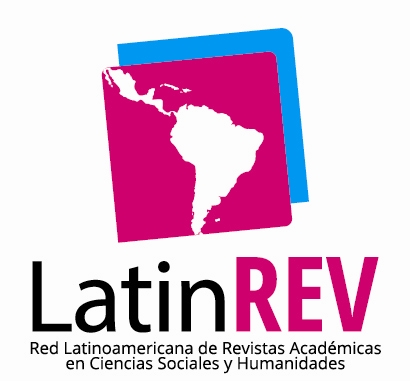Análisis Multitemporal de los Índices Vegetativos e Hidrológicos del Embalse de Chingaza.
Análisis Multitemporal de los Índices Vegetativos e Hidrológicos del Embalse de Chingaza.
DOI:
https://doi.org/10.5281/zenodo.15127280Palabras clave:
Análisis de datos, embalse chingaza, datos climáticosResumen
El cambio climático ha provocado transformaciones significativas en las condiciones hídricas del embalse de Chingaza y su relación con factores climáticos y ambientales. Esta investigación se enfoca en el uso de tecnologías aeroespaciales, el monitoreo ambiental mediante teledetección satelital y el análisis de datos geoespaciales para examinar patrones y tendencias. El estudio enfatiza la importancia del embalse de Chingaza como una fuente de agua crucial para millones de personas en la ciudad de Bogotá, que actualmente enfrenta racionamientos diarios de agua. La correlación entre NDVI (Índice de Vegetación Normalizada) y temperatura muestra un coeficiente de determinación (R²) de 0.2531, indicando que el 25.31% de la variabilidad en la temperatura puede ser explicada por el NDVI. Esto sugiere una correlación positiva moderada entre NDVI y temperatura, con un valor p de 0.0001, lo que indica una significancia estadística muy alta. En cuanto a la correlación entre NDWI y temperatura, se observó un R² de 0.2150, sugiriendo también una correlación positiva moderada, con un valor p de 0.0005. Las predicciones para los años 2026, 2036 y 2046 indican una tendencia decreciente en la vegetación y la humedad superficial, sugiriendo una posible desertificación y pérdida de biodiversidad. Estos resultados subrayan la necesidad urgente de implementar medidas deconservación para mitigar estos efectos negativos y proteger el ecosistema en la región.
Citas
Acueducto. (2023). Sistema Chingaza.
Avtar, R., Saito, O., Singh, G., Kobayashi, H., Ali, Y., Herath, S., & Takeuchi, K. (2014a). Monitoring responses of terrestrial ecosystem to climate variations using multi temporal remote sensing data in Ghana. International Geoscience and Remote Sensing Symposium (IGARSS). https://doi.org/10.1109/IGARSS.2014.6946535
Avtar, R., Saito, O., Singh, G., Kobayashi, H., Ali, Y., Herath, S., & Takeuchi, K. (2014b). Monitoring responses of terrestrial ecosystem to climate variations using multi temporal remote sensing data in Ghana. International Geoscience and Remote Sensing Symposium (IGARSS). https://doi.org/10.1109/IGARSS.2014.6946535
Avtar, R., Yunus, A. P., Saito, O., Kharrazi, A., Kumar, P., & Takeuchi, K. (2022a). Multi-temporal remote sensing data to monitor terrestrial ecosystem responses to climate variations in Ghana. Geocarto International, 37(2). https://doi.org/10.1080/10106049.2020.1723716
Avtar, R., Yunus, A. P., Saito, O., Kharrazi, A., Kumar, P., & Takeuchi, K. (2022b). Multi-temporal remote sensing data to monitor terrestrial ecosystem responses to climate variations in Ghana. Geocarto International, 37(2). https://doi.org/10.1080/10106049.2020.1723716
Cuellar, Y., & Perez, L. (2023). Multitemporal modeling and simulation of the complex dynamics in urban wetlands: the case of Bogota, Colombia. Scientific Reports, 13(1). https://doi.org/10.1038/s41598-023-36600-8
Ghansah, B., Foster, T., Higginbottom, T. P., Adhikari, R., & Zwart, S. J. (2022). Monitoring spatial-temporal variations of surface areas of small reservoirs in Ghana’s Upper East Region using Sentinel-2 satellite imagery and machine learning. In Physics and Chemistry of the Earth (Vol. 125). https://doi.org/10.1016/j.pce.2021.103082
Hellweger, F. L., Schlosser, P., Lall, U., & Weissel, J. K. (2004). Use of satellite imagery for water quality studies in New York Harbor. Estuarine, Coastal and Shelf Science, 61(3), 437–448. https://doi.org/10.1016/j.ecss.2004.06.019
Isoaho, A., Ikkala, L., Päkkilä, L., Marttila, H., Kareksela, S., & Räsänen, A. (2024). Multi-sensor satellite imagery reveals spatiotemporal changes in peatland water table after restoration. Remote Sensing of Environment, 306. https://doi.org/10.1016/j.rse.2024.114144
Li, D., Wu, B., Chen, B., Qin, C., Wang, Y., Zhang, Y., & Xue, Y. (2020a). Open-surface river extraction based on sentinel-2 MSI imagery and DEM Data: Case study of the upper yellow river. Remote Sensing, 12(17). https://doi.org/10.3390/RS12172737
Li, D., Wu, B., Chen, B., Qin, C., Wang, Y., Zhang, Y., & Xue, Y. (2020b). Open-surface river extraction based on sentinel-2 MSI imagery and DEM Data: Case study of the upper yellow river. Remote Sensing, 12(17). https://doi.org/10.3390/RS12172737
Sabogal Velez, C. L., Pedroza Toro, L. M., & González Angarita, G. P. (2023). Análisis de la vegetación a partir de índices espectrales y su relevancia en la identificación de espejos de agua en el humedal Torca Guaymaral, Bogotá, Colombia. Avances Investigación En Ingeniería, 20(2 (Julio-Diciembre)). https://doi.org/10.18041/1794-4953/avances.2.10708
Sanjay Wagh, P., Das, D., & Damani, O. P. (2019). Well detection in satellite images using convolutional neural networks. GISTAM 2019 - Proceedings of the 5th International Conference on Geographical Information Systems Theory, Applications and Management. https://doi.org/10.5220/0007734901170125
Suárez, A., Jiménez, A., Castro, M., & Cruz, A. (2017). Clasificación y mapeo automático de coberturas del suelo en imágenes satelitales utilizando Redes Neuronales Convolucionales. Orinoquia, 21(1).
Zhao, Y., He, X., Pan, S., Bai, Y., Wang, D., Li, T., Gong, F., & Zhang, X. (2024). Satellite retrievals of water quality for diverse inland waters from Sentinel-2 images: An example from Zhejiang Province, China. International Journal of Applied Earth Observation and Geoinformation, 132, 104048. https://doi.org/10.1016/j.jag.2024.104048
Descargas
Publicado
Cómo citar
Número
Sección
Licencia
Derechos de autor 2024 Laura Mercedes Arteaga Rojas, Jose Roncancio Barragan, Sergio Gonzalez Gil

Esta obra está bajo una licencia internacional Creative Commons Atribución-NoComercial-SinDerivadas 4.0.














